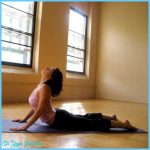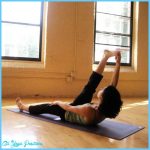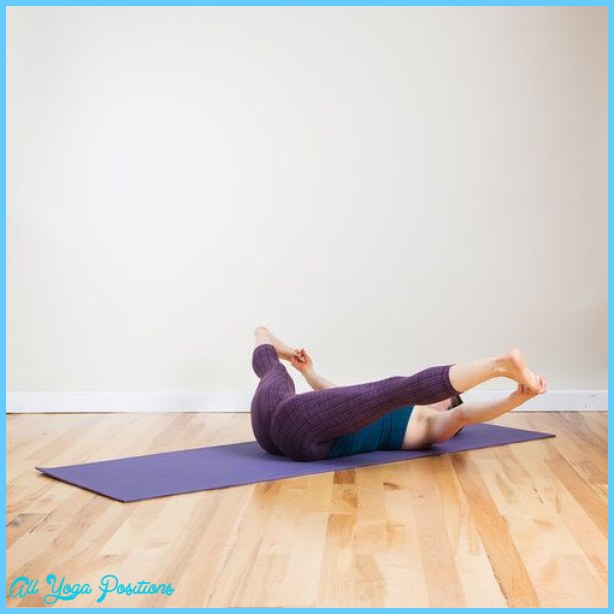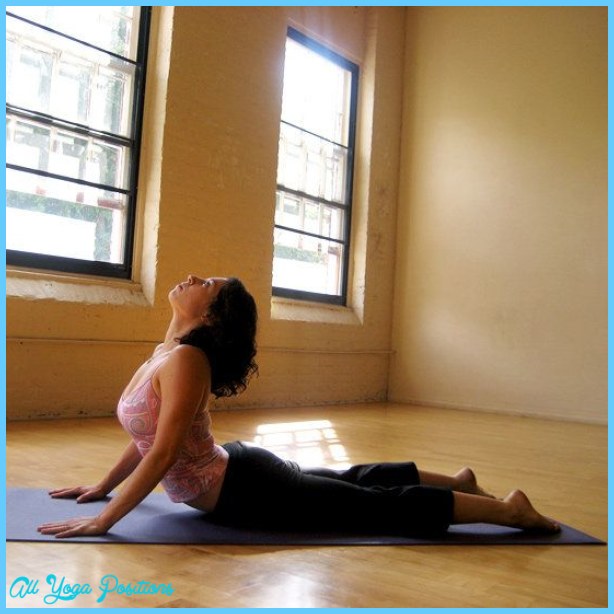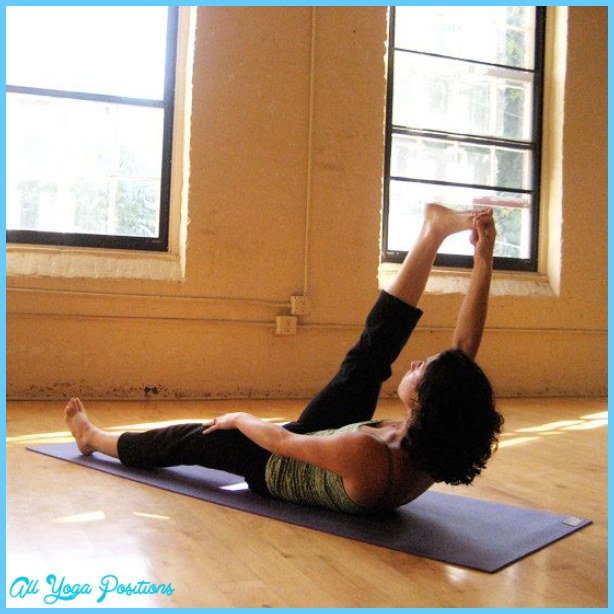Repeat the exercise on a breathe-in and tilt, breathe-out and relax, routine two or three times. Then stay with the relaxed feeling for a few more breaths. This maneouvre gives a useful bridge that takes you way back to the very beginning of the course when on Day One leg relaxation was practised.
2. Leg relaxation (pelvic tilt)
a. By now you can feel a tense leg muscle and all you have to do is to switch it to relax\
Having mastered the pelvic tilt, practise tilting the pelvis first in one direction and then in the other a little further, perhaps for three times. The tension you felt in learning the tilt will gradually be lost as the tilt persuades the thighs to relax easily without having to stress them, as you did in the original lift and drop leg exercises. Let your hands stay by your sides as you do this and stay with the memory of your relaxation.
b. As you do the pelvic tilt you must concentrate on synchronizing it with your pendulum breathing. While you learn this, let the feeling of the tilt first with one leg and the other get into some sort of rhythm, then concentrate on matching it to a four-second breath in and then out.
c. A natural progression from the pelvic tilt also relaxes the calf muscles and the difficult-to-relax muscles on the front of the legs. Before long both legs are well relaxed and then you can stop your exercises, staying with the relaxed legs feeling, so different from how they felt when you started the session.
3. Foot relaxation
Finally, the feet need attention. Feet are used to remaining tense for long periods, and possibly this is why they are so difficult to relax. A good tip is to try a little ‘grow longer’ guile on them. Working on the principle that when we are relaxed we don’t have to be screwed up and tiny, push heels as far away from you as you can. At the same time also push your toes out sideways firmly. Before long that ‘I’m relaxed’ feeling will start to creep into your feet too. (See illustration page 94.)



